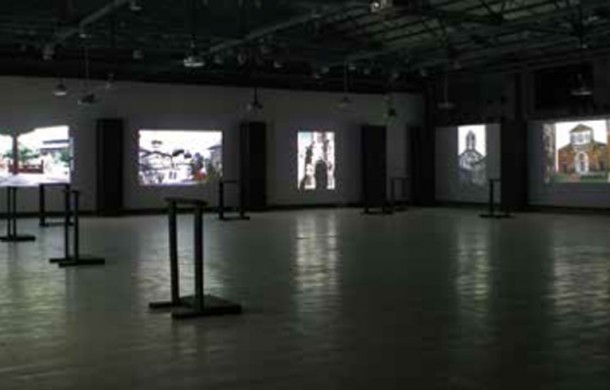AFTER HISTORY: ALEXANDRE KOJÈVE AS A PHOTOGRAPHER
| 2013年05月10日 | 发表于 LEAP 18

It was a series of very fortunate events that led Boris Groys to his discovery of the photographs and postcards that became “After History: Alexandre Kojève as a Photographer.” It could be said that Kojève is partially responsible for popularizing the concept of “post-history,” or what happens after history ends. It remains his greatest contribution to French modern thought, as well as the core principle of his political philosophy. Although this “end of history” originated from Hegel, it was through Kojève that the concept grew to strongly influence French modern thought and postmodern philosophy. More accurately, Kojève acted as a bridge between Hegel and postmodernism. In Hegelian thought, history is the conflict between master and slave. When the distinction between master and slave no longer exists, when their opposition and difference have disappeared, it would mean the end of history. In Kojève’s thought, this was achieved after the French Revolution and its successful advocacy of liberty, equality, and recognition of individual desire, thus marking the end of history and the beginning of post-history.
Certainly, Kojève’s system of thought is more complicated than this. But without even a simplified introduction, his non-pictorial photographs become without meaning. For Kojève, the meaning of these photographic images does not derive from an analysis of the conventions of photography, since they are not much different from pictures taken by any other tourist. Instead, they present the worldview of a sage; in other words, a philosopher’s aesthetics. We see that Kojève’s camera is frequently pointed toward architectural and historical sites, such as churches and palaces. Often, the picture only contains a building, or its corner, and very rarely shows people or other indications of life. Groys posits that the gaze itself is a way to experience history and memory. The photographs remind us that it was events from the past pushing history toward the condition of post-history; yet the reality of post-history is not ideal, and it too deserves reflection and critique.
This is not to say that Kojève’s photographs are without considerations of beauty. From subject to composition, he showed awareness of light and shadow as well as attention to form. Groys reminds us that Kojève had closely studied the works of Kandinsky, who also happened to be Kojève’s uncle.
In post-history, humanity returns to its animal nature, but Kojève believed that a practice focused on form could rescue— or transcend— this descent. Kojève had postulated that even though abstract art will ultimately become merely decorative, its rise remained closely related to the critique of popular culture; this includes photography, which is a product of popular culture. Clearly, Kojève used post-historical critique to reflect on post-historic conditions.
Groys projects the photographs as slides and provides viewing stations that allow the audience to experience the image from Kojève’s perspective, while maintaining respect for history, memory, and time. All of this is done as a way to preserve what Groys believed to have been Kojève’s original intent. Yet we do not even know whether any of the film now projected was ever developed during Kojève’s lifetime, since apparently Groys’ first encounter with these photographs was in the form of slides. Regardless, I find this structured viewing experience as a perfect response to Kojève’s demands of form.
What we do not see, however, is any historical evidence to support the idea that Kojève’s photography practice was in any way integrated into or related to his political philosophy. Rigorously reasoned though it may be, all of the discourse— including Groys’ explanations— remains as theory that was forced upon the evidence, or at worst just wild speculation. At this point of the discussion, we should also address Groys’ role in this project. Groys is a philosopher and curator. We could even say that he too is a sage, and must not forget his identity as an artist. Viewed from this perspective, “After History” becomes more like an artwork by Groys. On the surface, the exhibition seeks to establish a linkage between Kojève’s photography and political philosophy; it is presented as an attempt to investigate the inherent relationship between a person’s philosophical and visual consciousness. But in fact what is revealed is a more complicated problem: for a philosopher, must there be a relationship between his aesthetics— in this case expressed through photography— and his system of thinking? (Translated by JiaJingLiu)

